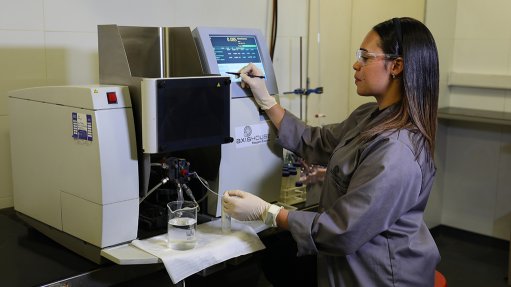
REAGENT DEVELOPMENT A large part of the technological advances we will be involved in pertain to improving the hazardous and environmental aspect of mineral processing
The specialised collectors, frothers, depressants and other similar reagent products that chemical reagent manufacturer and supplier Axis House has been developing to treat specific types of ore have been developed with high efficiency, safety and reducing environmental impact in mind.
“We can custom-make our reagents and develop our technologies to achieve maximum efficiencies from processed ores. A large part of the technological advances we will be involved in pertain to improving the hazardous and environmental aspect of mineral processing,” explains Axis House technical manager Bernard Oostendorp.
Axis House has been working on introducing safer alternatives for certain mine processes where there is a significant drive to reduce hazardous reagents and use less hazardous alternatives for these processes.
It has been developing alternative, less hazardous reagent products for the gold mining industry in particular.
Consequently, the company has introduced D20-M3 – an alternative to cyanide leaching, which is still widely used in the gold processing industry to extract gold from ore.
This alternative product has similar gold leaching capabilities but is significantly less hazardous.
“This means that any effluents released from the gold processing plant would contain significantly lower levels of cyanide. This is a product that can be implemented and achieve success from an environmental and safety perspective.”
Lead/Zinc Applications
For lead and zinc processing – with cyanide typically used as a zinc depressant in the lead circuit – Axis House has released nonhazardous products Revadep 150 and Revadep 226 that can be used to replace cyanide.
Oostendorp confirms that Axis House has been involved with a local lead and zinc processing operation since 2018.
This involvement has included Axis House’s assisting the customer on site in addressing processing challenges. It has also entailed laboratory tests to develop and fine-tune a solution that could be tested on site to prove its efficacy.
After the solution is proven, Axis House upgrades the solution to a full plant-scale one. A team of technicians also remains on site while the solution is being trialled to ensure optimal implementation.
A full handover is then conducted once these steps are completed and after-sales support is ongoing.
Following this approach has enabled Axis House to provide a collector product that has significantly improved the client’s zinc recoveries.
The collector product is more selective and rejects more gangue, consequently resulting in improvements on a plant scale, says Oostendorp.
“There are also similar projects from this client in the pipeline, now that we have the trust of the client and have the capabilities to test all their processes.”
Axis House will assist the client in improving their thickener efficiencies with its Bronte flocculant range and in finding solutions to address related processing challenges.
“The exciting part of this project is that we’ve applied the same method, as we have done for so long for mines internationally, in South Africa for the first time. This is a great milestone. “Our formula has worked so well for the last 20 years, and it now has a significant place in South African mining,” states Axis House MD Justine Stubbs.
Mining Indaba
Stubbs confirms that staff will attend the Investing in African Mining Indaba conference, to be held at the Cape Town International Convention Centre from May 9 to 12.
“We’re keen to reconnect with our customers, as the Indaba has always been a great forum for that. It can help with meeting existing clients, getting to know junior mining companies and finding out what mining projects are on the go so we can get involved in projects at an early stage.”
She adds that the Indaba has always provided a clear indication of the progression of the African mining industry.
Oostendorp points to the high-profile nature of the list of delegates attending the Mining Indaba and notes the opportunities that this creates in terms of sharing knowledge among industry stakeholders.
He states that, amid the global focus on transitioning to using metals and minerals required for renewable-energy technology, it is likely that these metals – including copper, cobalt and lithium – will be an important topic at the event, and to which Axis House will pay particular attention.
“We’ve been focusing on these types of metals, optimising the process for our reagents and helping customers with their processing challenges. Given the number of large miners attending, and that larger miners usually develop and adopt new technologies, we need to align ourselves with these trends so that we can adapt our business to service the industry going forward,” Oostendorp concludes.